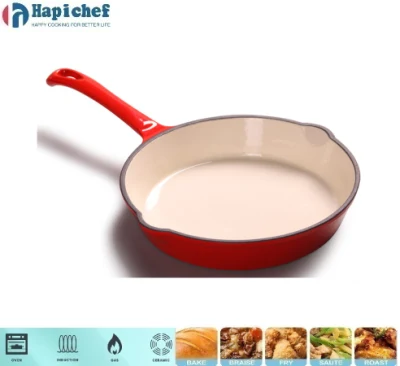Deep Frying Techniques Using a Cast Iron Dutch Oven for Perfectly Crispy Results
Deep Frying in a Cast Iron Dutch Oven A Culinary Adventure
Deep frying is a cooking technique that many home chefs are drawn to for its ability to produce delicious, crispy dishes. While it may seem daunting at first, using a cast iron Dutch oven can make the process not only manageable but also incredibly rewarding. The combination of cast iron’s excellent heat retention and distribution makes it an ideal choice for deep frying. In this article, we will explore the advantages of using a cast iron Dutch oven for deep frying, the best practices to follow, and some mouth-watering recipes to try.
Why Choose a Cast Iron Dutch Oven for Deep Frying?
Cast iron cookware has been a staple in kitchens for centuries due to its durability and superior cooking capabilities. When it comes to deep frying, a cast iron Dutch oven offers several distinct advantages
1. Heat Retention Cast iron retains heat exceptionally well, allowing for consistent frying temperatures. This is crucial when cooking foods like chicken or doughnuts, where even temperature is key to achieving a perfect, golden exterior.
2. Versatility A Dutch oven isn’t just for frying; it can also be used for braising, baking, and simmering. This makes it a versatile addition to your kitchen arsenal.
3. Flavor Development Cast iron can develop a natural seasoning that enhances the flavor of the food being cooked. Over time, your Dutch oven can become a beloved utensil, contributing a unique taste to each dish.
Best Practices for Deep Frying
While deep frying can be a fun and delicious method of cooking, it’s essential to follow some best practices to ensure safety and achieve the best results
1. Choose the Right Oil Select an oil with a high smoke point, such as vegetable oil, canola oil, or peanut oil, to avoid burning and imparting off-flavors to your dishes.
deep frying cast iron dutch oven

2. Maintain Oil Temperature Use a thermometer to monitor the oil temperature closely. Ideal frying temperatures usually range between 350°F to 375°F. If the oil is too hot, the food may burn on the outside while remaining uncooked on the inside. Conversely, if the oil is too cool, the food will absorb more oil and become greasy.
3. Don’t Overcrowd the Pot Frying in batches is essential. Overcrowding the Dutch oven can cause the temperature of the oil to drop significantly, leading to soggy results.
4. Allow for Proper Drainage After frying, place the food on a wire rack or on paper towels to drain excess oil. This will ensure a crispy texture and prevent sogginess.
Delicious Recipes to Try
Ready to put your cast iron Dutch oven to the test? Here are two delightful recipes to kickstart your deep frying adventure
1. Southern Fried Chicken Marinate chicken pieces in buttermilk for several hours. Dredge them in a mixture of seasoned flour and cornmeal. Heat oil in your Dutch oven to 350°F and fry the chicken in batches until golden brown and cooked through, about 15 minutes for each batch.
2. Classic Doughnuts Combine flour, sugar, baking powder, and nutmeg in a bowl. Add milk and eggs to form a dough. Roll out and cut into shapes. Heat oil to 375°F and fry the doughnuts until they puff up and turn golden brown. Dust with powdered sugar or cinnamon sugar for a sweet finish.
Conclusion
Deep frying in a cast iron Dutch oven is a journey worth embarking on. Not only does it produce beautifully crispy results, but it also enhances the flavors of your food. With proper techniques and a little practice, you’ll be able to master the art of deep frying, impressing your friends and family with your culinary creations. So roll up your sleeves, heat up that oil, and get ready to enjoy the delectable joys of deep-fried goodness!
-
Revolutionary Cast Iron Griddles Redefine Outdoor CookingNewsMay.09,2025
-
The Ultimate Guide to Cast Iron BBQ GrillsNewsMay.09,2025
-
Revolutionize Your Kitchen with Premium Cast Iron Casserole CookwareNewsMay.09,2025
-
Premium Cast Iron Bakeware CollectionNewsMay.09,2025
-
Our Premium Cast Iron Skillets CollectionNewsMay.09,2025
-
Discover the Art of Cooking with Premium Cast Iron Dutch OvensNewsMay.09,2025
-
The Versatility of a Cast Iron CasseroleNewsApr.21,2025
